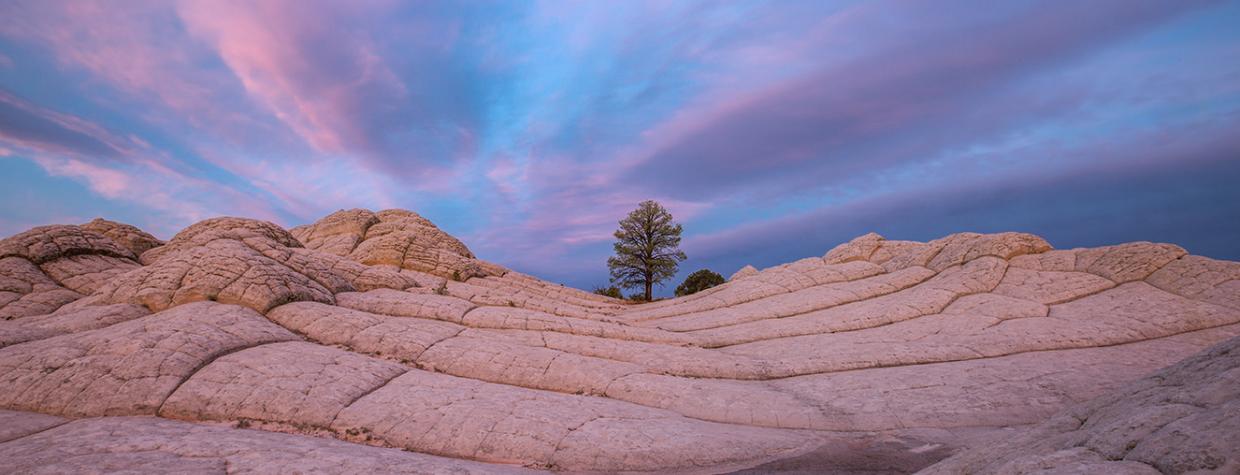Q. I was told many years ago, by a photography student and friend of mine, that a 50/50 sky-to-land ratio in landscape photographs was considered bad composition.
I haven’t seen this advice anywhere else. Is this true?
A. As many students and working photographers know, there are lots of so-called “rules” for composing photographs: the rule of thirds, balance, leading lines and repeating patterns, to name a few. There are plenty more, and each has validity, but in my 40-plus years of experience, there have been two rules that you can take to the bank. First: There are no absolutes. And second: Hard-and-fast rules will take you only so far in the world of image making. I’m not suggesting you discard rules of composition. Quite the opposite: These guidelines are incredibly helpful in translating the three-dimensional world we live in — latitude, longitude and altitude — into the two dimensions of photography, those being computer screens and prints. Knowing there’s no altitude or depth in our chosen medium, we have to find ways to reintroduce that important third element. And that’s where the rules of composition come in.
I recently had a nice chat with Suzanne Mathia about this subject, and I chose one of her photographs (right) as a talking point. Suzanne is a longtime contributor to the magazine and a talented workshop instructor for Arizona Highways PhotoScapes. She told me that in her role as a teacher, she gets lots of questions like this one, and her belief is that rules are a great starting point for everyone. She suggests putting them into practice and, after you feel comfortable with them, pushing the envelope.
Look at Suzanne’s photo of White Pocket. She put her horizon right in the center of the frame — which, as this question suggests, is a potential compositional no-no. Yet this photo works beautifully. When you view the photo, your entry point is at the lower left of the frame, at the base of the pool. You then follow the water upward, to where you’re stopped by the reflection of the lone tree. But it’s a brief pause, because you quickly shift your gaze up to the actual tree — where you notice it’s bathed in the soft pastel tones of sunset. Seeing this, you’re compelled to pull back and look at the image in its entirety. The natural folds in the geology seem to offset the angles formed by the clouds. At this point, you realize this photo is about texture and movement — there’s a symmetry that works effortlessly to showcase a lone tree, placed dead center in the frame.
How did Suzanne settle on this composition? She told me she decided to discard the traditional rules and go with her intuition. Before she releases the camera shutter, she always asks herself a simple question: Does this feel right? Add that question to your compositional to-do list, and with time and practice, it might serve you very well.
Do you have a question about photography? Email it to [email protected], and our photo editor, Jeff Kida, will try to answer it in a future issue.

